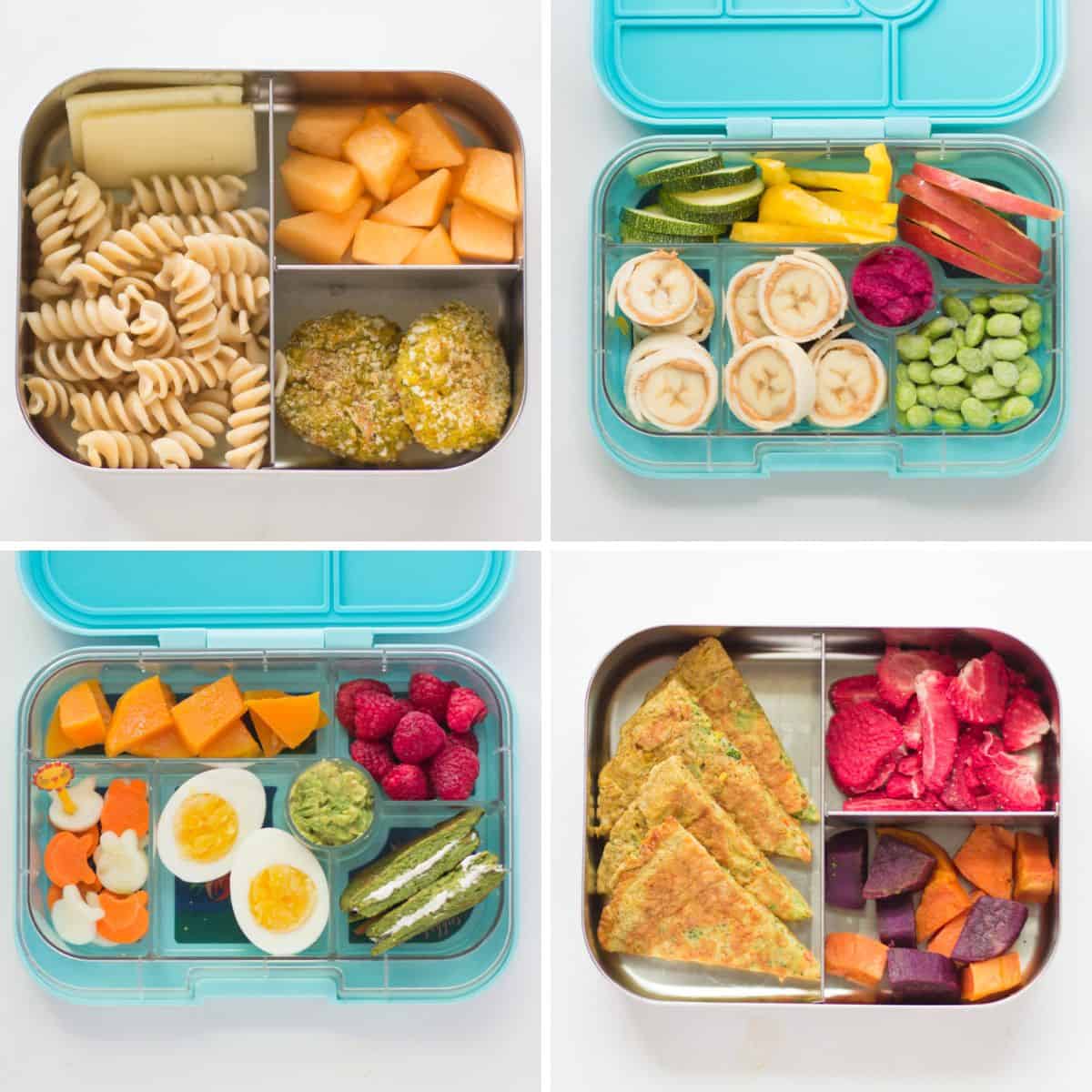Packing lunches can be a daily challenge, especially when navigating dietary restrictions. This guide dives into the vibrant world of nut-free bento boxes, offering creative and nutritious ideas for both children and adults. We’ll explore the essential components of a balanced nut-free lunch, providing delicious recipes and visually appealing presentation techniques to make mealtime a joy, not a chore. From colorful kid-friendly creations to sophisticated adult meals, we’ll cover it all, ensuring there’s something for everyone to enjoy.
Learn how to create a variety of nut-free bento boxes, each tailored to different dietary needs and preferences. We’ll explore the nutritional benefits of diverse ingredients, offering step-by-step instructions and tips for maximizing visual appeal. Discover innovative ways to present your creations, transforming ordinary lunches into exciting culinary adventures. Whether you’re a busy parent or an adult looking to elevate your lunchtime experience, this guide will equip you with the knowledge and inspiration to craft healthy, delicious, and visually stunning nut-free bento boxes.
Nut-Free Snack Ideas for Bento Boxes

Packing a nutritious and appealing bento box is a great way to ensure your kids and adults alike enjoy healthy and convenient meals. The absence of nuts, due to allergies, doesn’t limit the possibilities; in fact, it opens the door to a world of delicious and diverse nut-free options. This section will explore a variety of nut-free snack ideas perfect for both children and adults, emphasizing the importance of texture and flavor variety for a truly satisfying and engaging meal.
Nut-Free Snack Variety for Bento Boxes
A balanced bento box should incorporate a variety of food groups to provide complete nutrition. Including diverse textures and flavors is also crucial to maintain interest and prevent mealtime boredom. The contrast between crunchy, soft, sweet, and savory elements creates a more enjoyable eating experience. Consider the visual appeal as well; a colorful bento box is naturally more inviting.
- Fruits: Sliced grapes (packed with antioxidants and natural sugars), berries (rich in vitamins and fiber), apple slices with cinnamon (adds a warm spice and helps prevent browning), mandarin orange segments (a good source of Vitamin C).
- Vegetables: Baby carrots (packed with beta-carotene), cucumber sticks (hydrating and low in calories), cherry tomatoes (bursting with vitamins and lycopene), bell pepper strips (colorful and provides Vitamin C).
- Grains: Whole-grain crackers (provides fiber and complex carbohydrates), popcorn (a whole grain snack, low in calories and high in fiber when air-popped), mini whole-wheat pita bread (versatile and can be paired with dips or spreads).
- Dairy Alternatives: String cheese (provides calcium and protein), cubed tofu (a good source of plant-based protein), yogurt tubes (calcium and probiotics, choose plain varieties and add fruit for sweetness).
- Protein Sources: Hard-boiled eggs (excellent source of protein and choline), edamame (a good source of plant-based protein and fiber), chickpeas (high in fiber and protein, can be roasted for a crunchy snack).
- Other: Sunflower seed butter and celery sticks (a classic combination providing healthy fats and fiber), seaweed snacks (rich in minerals and low in calories), fruit leather (a convenient and naturally sweet option).
Preparing Three Nut-Free Snacks: A Step-by-Step Guide
Preparing these snacks is quick and easy, making them ideal for busy mornings or lunch packing routines.
Preparing Hard-Boiled Eggs
1. Place eggs in a single layer in a saucepan.
2. Cover with cold water by about an inch.
3. Bring the water to a rolling boil.
4. Once boiling, remove from heat, cover, and let sit for 10-12 minutes (depending on egg size).
5. Drain the hot water and run cold water over the eggs to stop the cooking process.
6. Gently tap the eggs on a hard surface to crack the shells.
7. Peel under cold running water for easier peeling.
8. Cut in half or quarters for easy inclusion in a bento box. The vibrant yellow yolk provides a visual contrast against other foods.
Preparing Edamame
1. If using frozen edamame, steam or microwave according to package directions until tender.
2. If using fresh edamame, boil in salted water until the pods are bright green and tender (about 5-7 minutes).
3. Drain well and let cool slightly.
4. Lightly salt (optional). The bright green color adds a visually appealing element to the bento box.
Preparing Apple Slices with Cinnamon
1. Wash and core a crisp apple.
2. Slice the apple into thin, even pieces.
3. Sprinkle generously with cinnamon. The cinnamon adds warmth and complements the sweetness of the apple, preventing browning and adding a fragrant aroma.
Creating nut-free bento boxes is not just about packing food; it’s about crafting a delightful and healthy experience. By embracing variety, color, and creative presentation, you can transform lunch into a moment of joy and nourishment. Whether you’re packing for a picky eater or yourself, this guide has provided the tools and inspiration to create delicious and visually appealing nut-free meals. Remember to adapt the recipes and ideas to suit individual preferences and dietary needs, making lunch a celebration of healthy eating.
Quick FAQs
What are some good substitutes for nuts in bento boxes?
Sunflower seeds, pumpkin seeds, sesame seeds, and chia seeds offer similar healthy fats and textures.
How can I keep my bento box fresh throughout the day?
Use an insulated lunch bag with an ice pack. Pack foods that don’t spoil easily and separate moist foods from dry ones.
How do I involve my child in packing their bento box?
Let them choose some of the ingredients and help with simple tasks like washing fruits or vegetables. This fosters independence and healthy eating habits.
Can I prepare bento boxes ahead of time?
Yes! Many components can be prepped on the weekend, saving time during the week. Store them separately and assemble the boxes in the morning.
What if my child refuses to eat certain foods in their bento box?
Offer a variety of options and don’t force them to eat everything. Focus on positive reinforcement and gradually introduce new foods.


